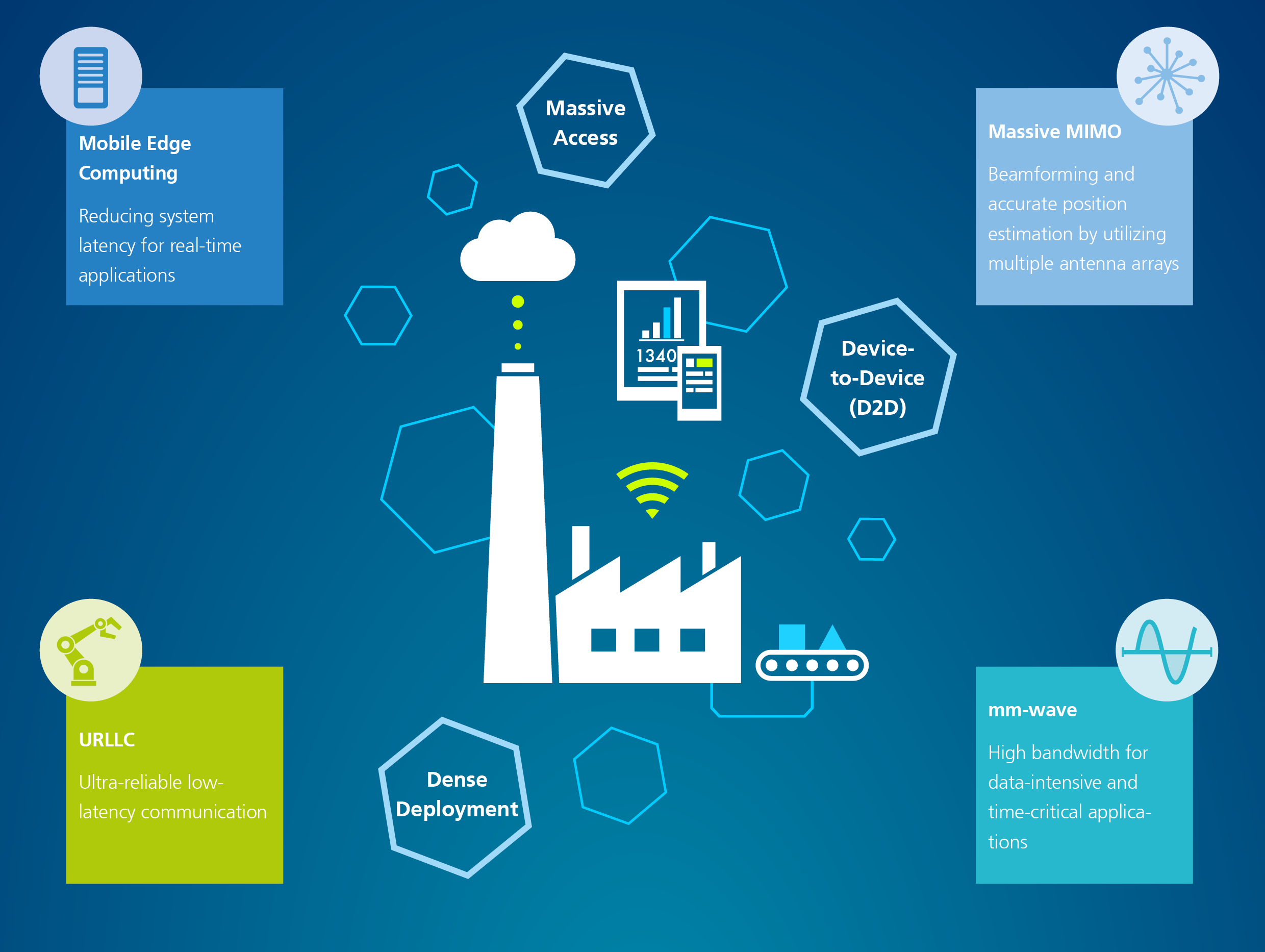Ultra-reliable low-latency communication (URLLC)
The upcoming 5G standard will be able to meet enhanced requirements as it targets latencies under one millisecond, data rates of up to ten gigabits per second, extremely high network reliability, and better accuracy in positioning. Thereby, 5G provides fast and reliable access to moving objects in order to achieve time-critical process control and optimization in industrial environments, which are not possible with today’s cellular technology. As requirements vary according to the specific use cases, 5G New Radio (NR) will provide a flexible air interface allowing for scalable bandwidths, data rates, latencies, and positioning accuracy levels.
Ultra-Reliable and Low-Latency Communication (URLLC) is a key enabler for seamless interaction between machines in time-critical applications.
Industrial applications require a reduction of communication latency while simultaneously guaranteeing an extremely high level of reliability. All layers of the communication system need to be optimized starting from physical layer by scaling down the transmission time and enhancing reliability through increased redundancies. Upcoming LTE releases use a shorter version of the transmission time interval (sTTI) and apply enhanced functionality for higher reliability (HRLLC). 5G NR will introduce increased subcarrier spacing resulting in shorter transmission slots and a shorter HARQ round-trip time enabling higher reliability. Complementarily, more effort in both LTE and NR is invested to further reduce the processing time required in the upper layers of the protocol stack.
